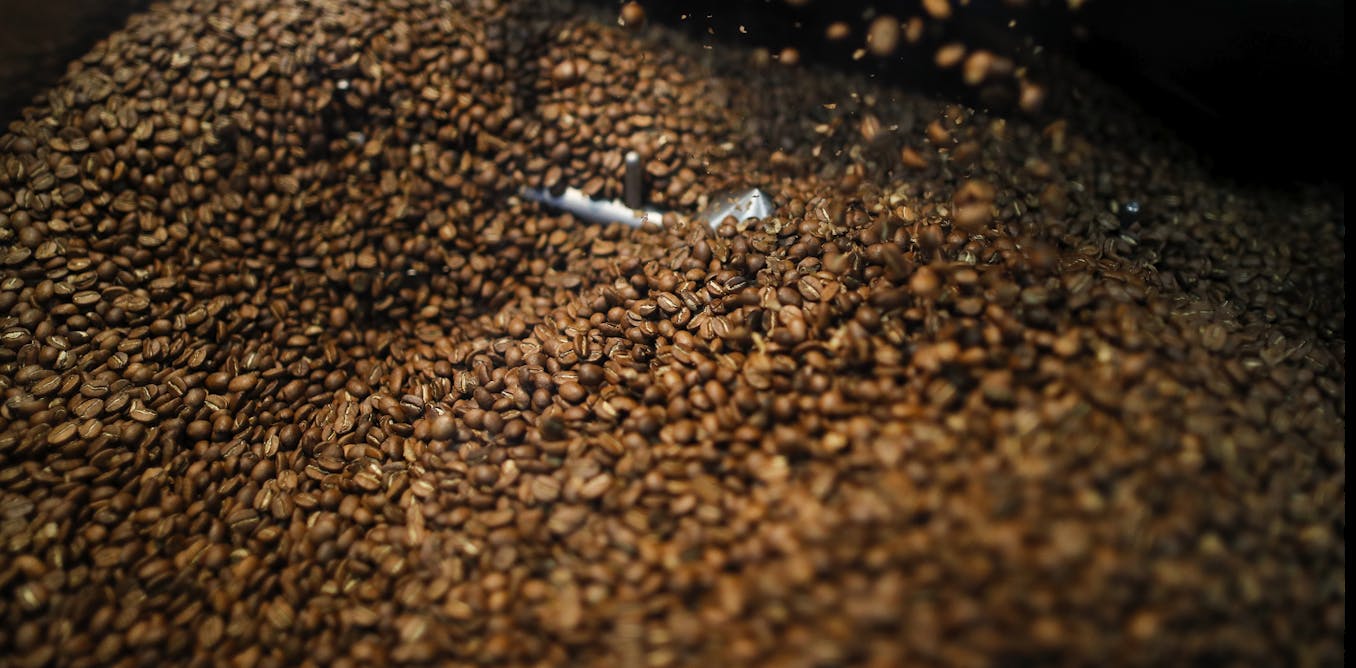For many people, the aroma of freshly brewed coffee is the start of a great day. But caffeine can cause headaches and jitters in others. That’s why many people reach for a decaffeinated cup instead. I’m a chemistry professor who has taught lectures on why chemicals dissolve in some liquids but not in others. The processes of decaffeination offer great real-life examples of these chemistry concepts. Even the best decaffeination method, however, does not remove all of the caffeine – about 7 milligrams of caffeine usually remain in an 8-ounce cup. Producers decaffeinating their coffee want to remove the caffeine while retaining all – or at least most – of the other chemical aroma and flavor compounds.
Decaffeination has a rich history, and now almost all coffee producers use one of three common methods. All these methods, which are also used to make decaffeinated tea, start with green, or unroasted, coffee beans that have been premoistened. Using roasted coffee beans would result in a coffee with a very different aroma and taste because the decaffeination steps would remove some flavor and odor compounds produced during roasting. Here’s a summary of each method discussed by Dr. Crowder:
-
The Carbon Dioxide Method: Developed in the early 1970s, the carbon dioxide method uses high-pressure CO2 to extract caffeine from moistened coffee beans, resulting in coffee that retains most of its flavor. The caffeine-laden CO2 is then filtered out using water or activated carbon, removing 96% to 98% of the caffeine with minimal CO2 residue.
-
The Swiss Water Process: First used commercially in the early 1980s, the Swiss water method uses hot water and activated charcoal filters to decaffeinate coffee, preserving most of its natural flavor. This chemical-free approach removes 94% to 96% of the caffeine by soaking the beans repeatedly until the desired caffeine level is achieved.
-
Solvent-Based Methods: Originating in the early 1900s, solvent-based methods use organic solvents like ethyl acetate and methylene chloride to extract caffeine from green coffee beans. These methods remove 96% to 97% of the caffeine through either direct soaking in solvent or indirect treatment of water containing caffeine, followed by steaming and roasting to ensure safety and flavor retention.
“It’s chemically impossible to dissolve out only the caffeine without also dissolving out other chemical compounds in the beans, so decaffeination inevitably removes some other compounds that contribute to the aroma and flavor of your cup of coffee,” writes Dr. Crowder in closing. “But some techniques, like the Swiss water process and the indirect solvent method, have steps that may reintroduce some of these extracted compounds. These approaches probably can’t return all the extra compounds back to the beans, but they may add some of the flavor compounds back.”



Very nice. Thank you. What about Charrier coffee? I’d love to see some cross breeding experiments with this. I’ve heard it’s really quite wimpy tasting, but perhaps some experimenting with this plant could lead to better natural caffeine free coffee? Also, is it accurate that robusta beans are more commonly used for decaf? Is that because they tolerate the processing better? Finally, what to they do with the caffeinated co2? Seems like soda makers could use that to both carbonate and caffeinate their beverages.